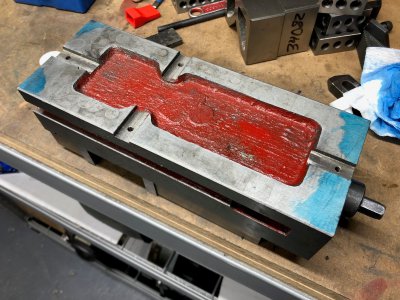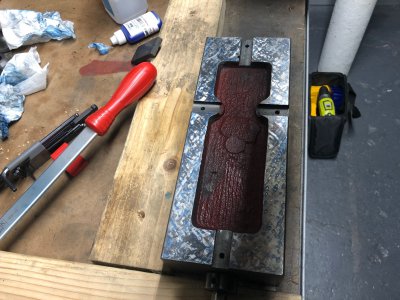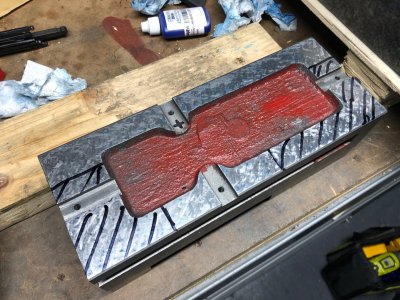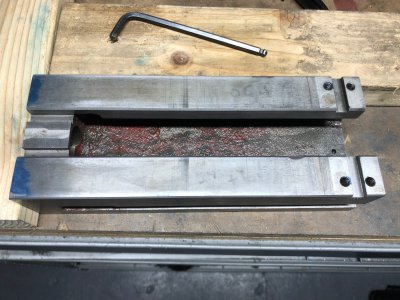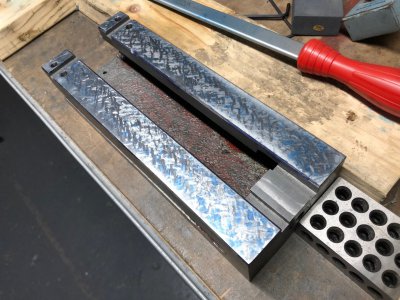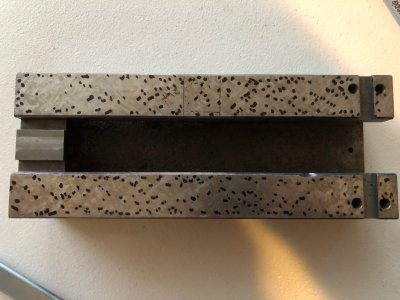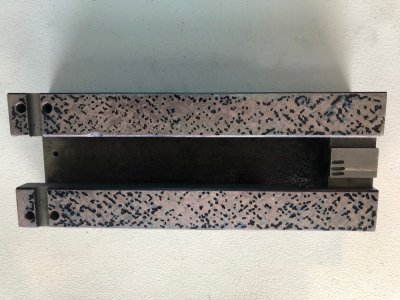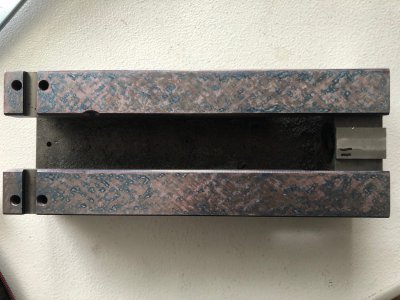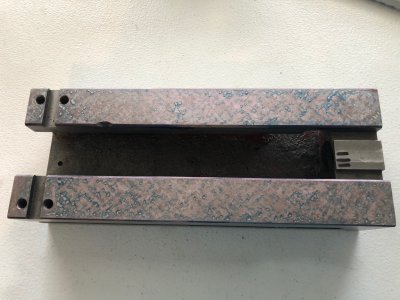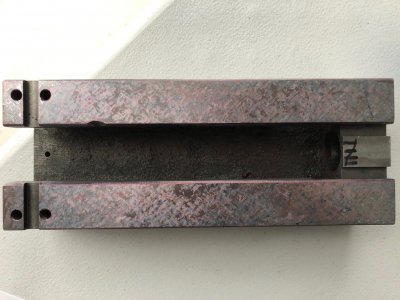- Joined
- Mar 26, 2018
- Messages
- 2,724
I would love some clarification on the roughing cycle of scraping. The largest thing I've practiced on has been a 4" vise body so I'm sure the roughing of a large worn out machine is on a whole different level from what I am doing.
I find myself essentially high pointing with a heavier cut and avoiding low regions to rough out material. I am starting to get the feeling however, that the goal is not to aim for the blue spots necessarily but rather to only focus on cross hatching an area to bring the surface down. I tried to do this but I wonder how you can keep yourself from scraping down the valleys even lower when doing this? Not sure how exactly to phrase my question, but what is the methodology of roughing in the part. In my latest example, I had to correct about 0.0030" of bow across the face of the vise (import garbage). What would be a ballpark time for someone to hand scrape this? It took me probably 2-3 hours to get it flat and I expect another hour to hit the high points to bring up the points per inch.
What is the criteria for switching from roughing to going after highpoints?
I see about half of the youtube guys who scrape doing discrete strokes, while others do a push stroke and drag back across the part to start the next stroke, like one would do with a paint scraper. I feel like discrete strokes is the "correct" way, but I also find that I can scrape faster and more accurately when I drag back on the part doing a bunch of strokes in quick succession.
Finally, my scraping is a bit haphazard when roughing in the surface. I follow the 45 degree lines and cross my previous pass in the other direction, but I don't put any effort in spaing out my strokes evenly, keeping them perfectly angled to each other, keeping the stroke length consistent, etc. Should I be? Is this just an aesthetic thing or is there a good reason to try to pay more attention?
Thanks!
Mike
I find myself essentially high pointing with a heavier cut and avoiding low regions to rough out material. I am starting to get the feeling however, that the goal is not to aim for the blue spots necessarily but rather to only focus on cross hatching an area to bring the surface down. I tried to do this but I wonder how you can keep yourself from scraping down the valleys even lower when doing this? Not sure how exactly to phrase my question, but what is the methodology of roughing in the part. In my latest example, I had to correct about 0.0030" of bow across the face of the vise (import garbage). What would be a ballpark time for someone to hand scrape this? It took me probably 2-3 hours to get it flat and I expect another hour to hit the high points to bring up the points per inch.
What is the criteria for switching from roughing to going after highpoints?
I see about half of the youtube guys who scrape doing discrete strokes, while others do a push stroke and drag back across the part to start the next stroke, like one would do with a paint scraper. I feel like discrete strokes is the "correct" way, but I also find that I can scrape faster and more accurately when I drag back on the part doing a bunch of strokes in quick succession.
Finally, my scraping is a bit haphazard when roughing in the surface. I follow the 45 degree lines and cross my previous pass in the other direction, but I don't put any effort in spaing out my strokes evenly, keeping them perfectly angled to each other, keeping the stroke length consistent, etc. Should I be? Is this just an aesthetic thing or is there a good reason to try to pay more attention?
Thanks!
Mike


